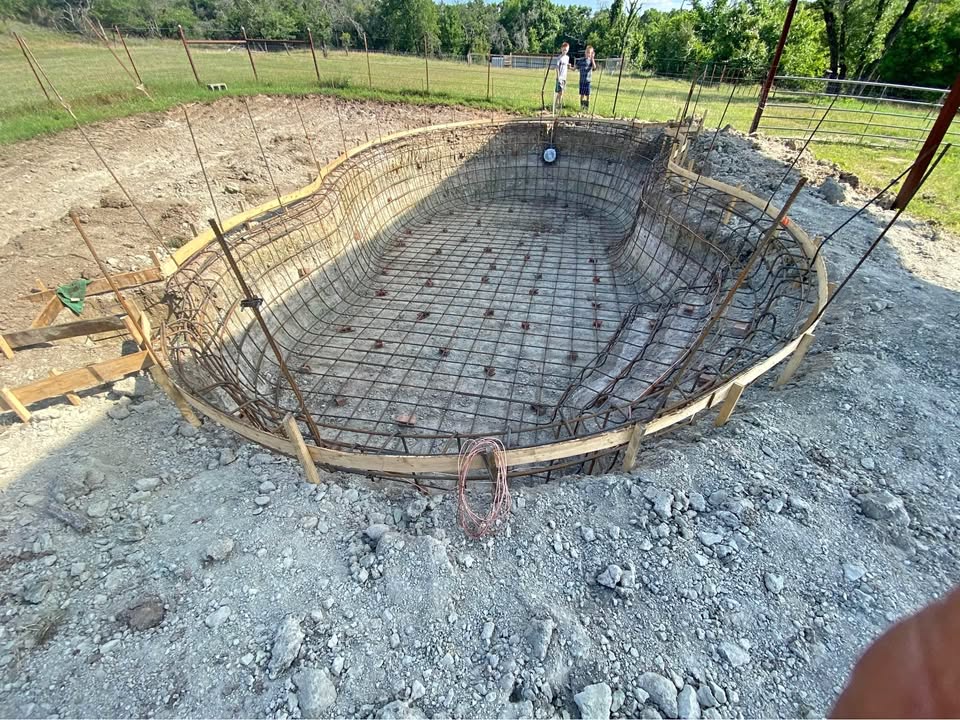Essential Safety Protocols for Heavy Equipment Operators
11 Lectura mínima
)
agosto 9, 2024
Heavy equipment operators play a crucial role in various industries such as construction, mining, and agriculture. These operators handle powerful machinery on a daily basis, making safety protocols essential for their well-being and the safety of others around them. In this article, we will explore the importance of safety protocols, basic and advanced protocols, safety protocols for specific types of heavy equipment, as well as the training and certification requirements for heavy equipment operators.
Understanding the Importance of Safety Protocols
When it comes to heavy equipment operations, safety protocols serve as a guide to prevent accidents and minimize risks. These protocols establish a set of standardized procedures that operators must follow to ensure their own safety, protect the equipment, and safeguard the surrounding environment. By adhering to safety protocols, operators can mitigate potential hazards and create a safe working environment.
One of the key aspects of safety protocols in heavy equipment operations is the emphasis on proper training. Operators must undergo comprehensive training programs that cover not only the technical aspects of operating the equipment but also the safety procedures that need to be followed. This training ensures that operators are equipped with the knowledge and skills necessary to handle the equipment safely and effectively.
Furthermore, safety protocols also include regular inspections and maintenance of the equipment. This ensures that the equipment is in optimal condition and reduces the risk of malfunctions or breakdowns during operation. Regular inspections help identify any potential issues or defects that need to be addressed promptly, ensuring the safety of both the operator and the equipment.
The Role of Safety Protocols in Heavy Equipment Operations
When it comes to heavy equipment operations, safety protocols play a crucial role in ensuring the well-being of operators and the overall success of the operation. These protocols provide a framework for operators to follow, outlining the necessary steps and precautions to take in order to carry out their tasks safely and efficiently.
One of the primary functions of safety protocols is to identify and assess potential hazards. Heavy equipment operations often involve working in hazardous environments, such as construction sites or industrial facilities. Safety protocols help operators identify these hazards and take appropriate measures to mitigate the risks associated with them. This may include wearing personal protective equipment (PPE), implementing safety barriers, or using specialized tools and equipment.
Additionally, safety protocols also promote effective communication and coordination among operators and other personnel involved in the operation. Clear communication is essential to ensure that everyone is aware of their roles and responsibilities, as well as any potential risks or changes in the working conditions. This helps prevent misunderstandings or confusion that could lead to accidents or delays in the operation.
The Consequences of Ignoring Safety Protocols
Failure to follow safety protocols can lead to severe consequences for heavy equipment operators. Accidents caused by negligence or ignorance of safety procedures can result in injuries, fatalities, and significant damage to the equipment and surrounding infrastructure. Additionally, disregarding safety protocols can lead to legal ramifications, including lawsuits and fines. Therefore, it is imperative for operators to prioritize safety protocols at all times.
Ignoring safety protocols not only puts the operator at risk but also endangers the lives of others working in the vicinity. Heavy equipment accidents can have far-reaching consequences, affecting not only the individuals involved but also their families and the wider community. It is crucial for operators to understand that their actions have consequences beyond their immediate surroundings and that following safety protocols is a responsibility they owe to themselves and others.
Furthermore, ignoring safety protocols can also have financial implications for operators and their employers. The costs associated with accidents, such as medical expenses, equipment repairs, and potential legal fees, can be substantial. Moreover, accidents can lead to project delays and disruptions, resulting in financial losses for the company. By adhering to safety protocols, operators can help minimize these risks and protect their own financial well-being, as well as that of their employers.
Basic Safety Protocols for Heavy Equipment Operators
Personal Protective Equipment (PPE) Usage
One of the fundamental safety protocols for heavy equipment operators is the proper use of personal protective equipment (PPE). This includes wearing protective clothing, such as helmets, safety glasses, gloves, and high-visibility vests. PPE serves as a barrier between the operator and potential hazards, providing vital protection in the event of accidents or flying debris.
When it comes to helmets, operators should ensure that they are wearing a properly fitted and approved helmet that meets the necessary safety standards. Helmets are designed to protect the head from falling objects, impact, and electrical hazards. Safety glasses are also crucial in protecting the eyes from dust, debris, and harmful UV rays. Operators should opt for safety glasses with side shields for maximum coverage.
Gloves are another essential piece of PPE for heavy equipment operators. They provide protection against cuts, abrasions, and chemical exposure. Operators should choose gloves that are specifically designed for the tasks they will be performing, ensuring a secure and comfortable fit. High-visibility vests are necessary for operators working in areas with traffic or low visibility conditions. These vests make operators more visible to others, reducing the risk of accidents.
Pre-Operation Safety Checks
Prior to starting any heavy equipment, operators must perform pre-operation safety checks. This involves inspecting the machinery for any visible defects or malfunctions, ensuring that all controls are in proper working order, and verifying that safety features, such as seat belts and emergency stop buttons, are functional. Conducting regular maintenance and addressing any issues promptly contribute to overall safety.
During the pre-operation safety checks, operators should pay close attention to the condition of the equipment's tires or tracks. They should inspect for any signs of wear, damage, or inadequate inflation. Proper tire or track maintenance is crucial for ensuring stability and maneuverability while operating heavy equipment.
Additionally, operators should inspect the hydraulic systems, checking for leaks, loose connections, or damaged hoses. Hydraulic systems are responsible for powering various components of heavy equipment, and any issues can lead to malfunctions or accidents. It is important to address hydraulic system problems promptly to prevent further damage and ensure safe operation.
Furthermore, operators should inspect the equipment's electrical system, including lights, alarms, and warning signals. Proper functioning of these systems is essential for maintaining visibility and alerting others to the presence of the heavy equipment. Any malfunctioning electrical components should be repaired or replaced before operating the machinery.
Lastly, operators should ensure that all safety features, such as seat belts and emergency stop buttons, are in good working condition. Seat belts are designed to keep operators securely in their seats in the event of sudden stops or impacts. Emergency stop buttons provide a quick and easy way to shut down the equipment in case of emergencies. Regularly checking and testing these safety features is crucial for operator safety.
Advanced Safety Protocols for Heavy Equipment Operators
When it comes to heavy equipment operations, safety is of utmost importance. Advanced safety protocols are designed to ensure that operators are well-prepared to handle any situation that may arise. In this article, we will explore two key aspects of these protocols: handling equipment failures and emergency response procedures.
Handling Equipment Failures
Despite regular maintenance, equipment failures can still occur. This is why advanced safety protocols for heavy equipment operators include procedures specifically designed to address such situations. These protocols aim to minimize the risks associated with equipment failures and ensure the safety of both the operators and those around them.
One of the first steps in handling equipment failures is to safely shut down the machinery. This involves following a set of predefined steps to ensure that the equipment is turned off in a controlled and safe manner. Operators are trained to identify the signs of equipment failure and take immediate action to prevent any further damage or accidents.
Once the machinery has been safely shut down, the next step is to notify the relevant personnel. This may include supervisors, maintenance technicians, or other team members who need to be informed about the situation. Effective communication is crucial in these situations to ensure that everyone is aware of the equipment failure and can take appropriate action.
After notifying the relevant personnel, operators are trained to implement appropriate measures to secure the site and prevent further damage or accidents. This may involve cordoning off the area, setting up warning signs, or taking any other necessary precautions to ensure the safety of everyone involved.
Emergency Response Procedures
In addition to handling equipment failures, advanced safety protocols also outline emergency response procedures. These procedures are designed to ensure that operators are well-prepared to respond swiftly and appropriately in the event of an emergency.
One key aspect of emergency response procedures is the development of evacuation plans. These plans outline the steps to be taken in the event of an emergency, including the designated evacuation routes, assembly points, and any other relevant information. Operators are trained to familiarize themselves with these plans and to act quickly and calmly in the event of an emergency.
Communication methods are also an important part of emergency response procedures. Operators are trained to use the appropriate communication devices to alert others about the emergency and to coordinate the response efforts. This may involve using two-way radios, emergency alarms, or any other communication tools that are available on-site.
Furthermore, operators are trained in basic first aid techniques as part of their advanced safety protocols. This ensures that they are able to provide immediate assistance to anyone who may be injured during an emergency. First aid kits are readily available on-site, and operators are trained to use them effectively to provide the necessary medical care until professional help arrives.
Lastly, operators have access to emergency contact information at all times. This includes the contact details for emergency services, supervisors, and other relevant personnel. Having this information readily available ensures that operators can quickly reach out for assistance when needed.
In conclusion, advanced safety protocols for heavy equipment operators are comprehensive and thorough. They cover a wide range of scenarios, including equipment failures and emergency situations. By following these protocols, operators can ensure their own safety as well as the safety of those around them.
Safety Protocols for Specific Types of Heavy Equipment
Safety Protocols for Cranes
Cranes are versatile and powerful machines commonly used in construction projects. Safety protocols specific to cranes include ensuring stable ground conditions, conducting regular inspections of lifting equipment and rigging, and adhering to load capacity limits. Additionally, operators must be aware of overhead power lines and take necessary precautions to prevent electrocution.
Safety Protocols for Bulldozers
Bulldozers are heavy-duty machines used for earthmoving and land clearing tasks. Safety protocols for bulldozer operators include performing regular maintenance checks on crucial components such as the blade, tracks, and hydraulic system. Operators must also use caution when operating on steep slopes and ensure proper communication with ground personnel.
Training and Certification for Heavy Equipment Operators
Importance of Proper Training
Proper training is a vital component of safety protocols for heavy equipment operators. It equips operators with the necessary knowledge and skills to operate machinery safely and effectively. Training programs typically cover topics such as equipment operation, safety procedures, risk assessment, and emergency response. Ongoing training is essential to ensure operators stay up-to-date with the latest industry standards and best practices.
Understanding Certification Requirements
Certification is often required to legally operate heavy equipment. Certification requirements may vary depending on the region and type of equipment. Operators are generally required to pass written and practical exams to demonstrate their competence. Certification ensures that operators have received proper training and possess the necessary skills to operate heavy equipment safely, promoting a higher level of professionalism in the industry.
By adhering to essential safety protocols, heavy equipment operators can reduce the risk of accidents, protect themselves and others, and ensure a productive work environment. Basic protocols, such as PPE usage and pre-operation safety checks, lay the foundation for safe operations. Advanced protocols, including handling equipment failures and emergency response procedures, prepare operators for unexpected situations. Safety protocols specific to different types of heavy equipment ensure that operators are knowledgeable about the specific hazards associated with their machinery. Finally, proper training and certification are crucial to instilling a culture of safety within the industry.
As heavy equipment continues to play a significant role in the development of various sectors, ongoing emphasis on safety protocols is essential to protect the operators and promote a safer work environment for all.

Caleb Woods is an experienced content specialist and an editor at Boom & Bucket, blending his journalism background with expertise in the heavy equipment industry. He delivers engaging, informative content to help professionals stay informed and make smarter decisions in the machinery market.














